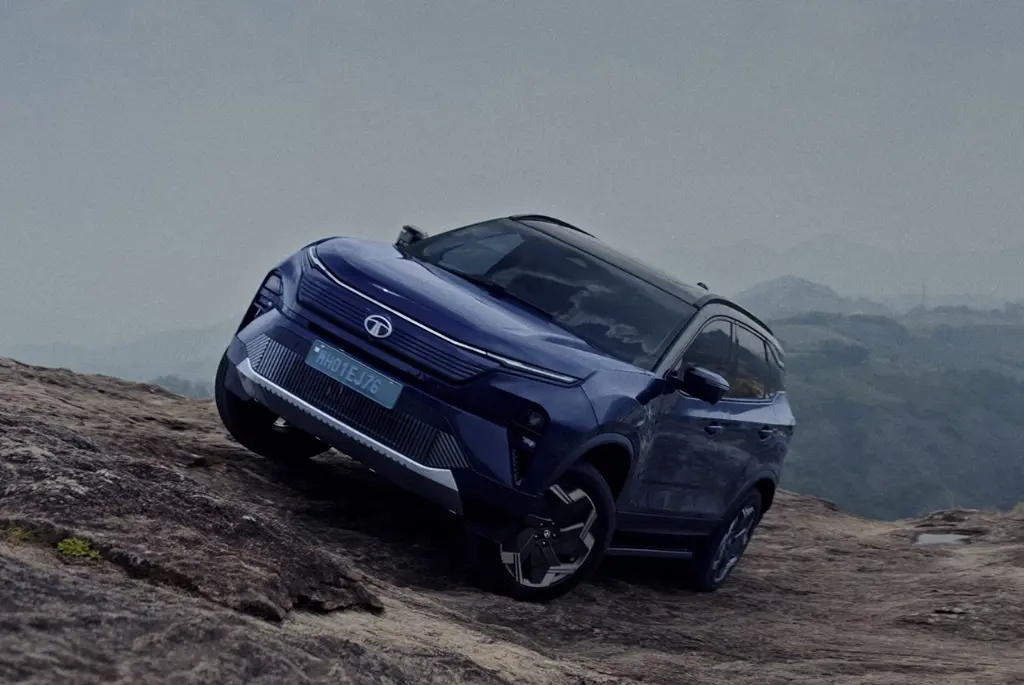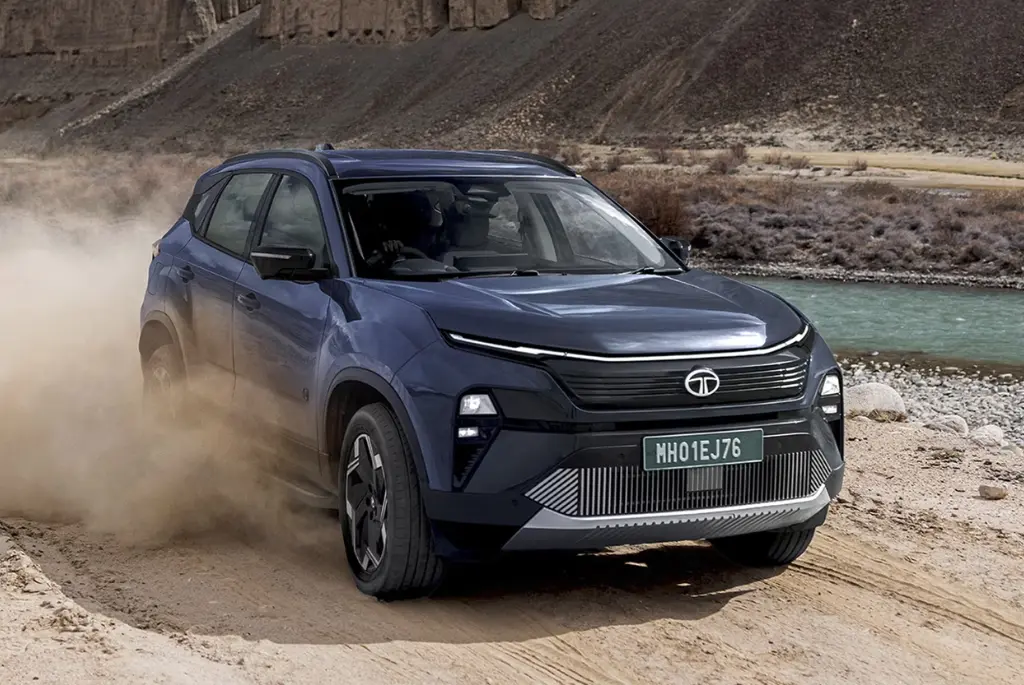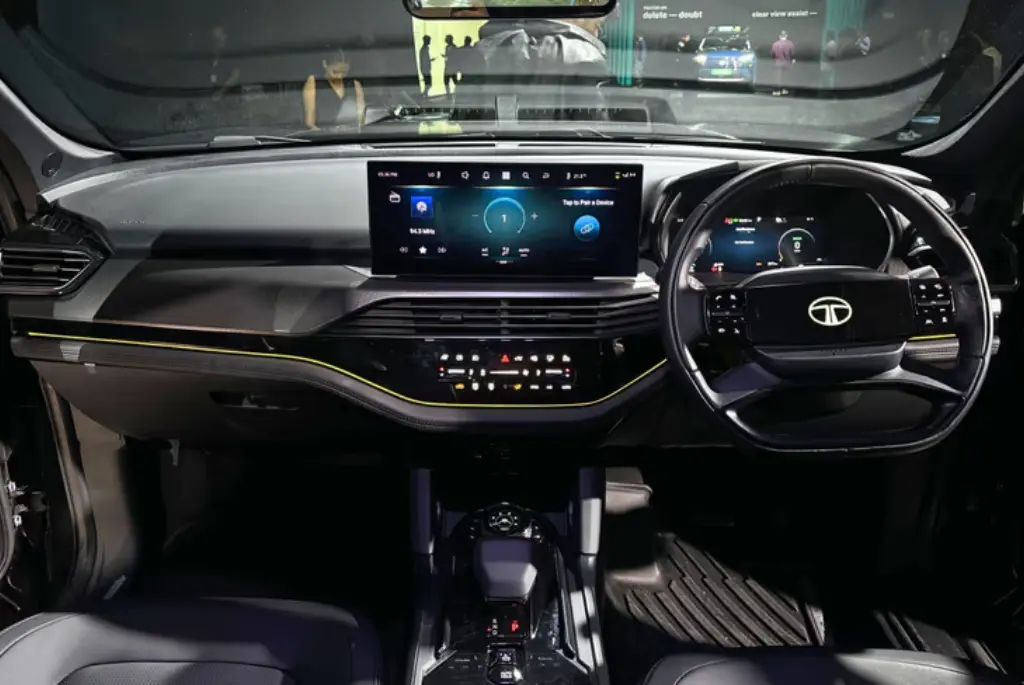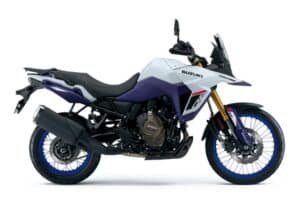
Tata Motors introduced the eagerly anticipated Harrier EV in India, with a starting price of ₹21.49 lakh, or around $25,900. In addition to being Tata’s highest-end EV model, this new SUV also reinstates all-wheel drive, which was last seen in the Safari Storme more than five years ago. The Harrier EV will go on sale on July 2, 2025.
Tata Harrier EV: Design

The Harrier EV has the same style as the updated Tata Harrier that came out in 2023, with a few changes made to make it more EV-friendly. It gets a clean, closed-off grille up front, as well as a new bumper with a unique design built on lines. It has new 19-inch metal wheels that are better at reducing drag, and the front doors have “EV” badges. The only change to the back is the addition of the words “Harrier.EV” to the trunk.
The EV Harrier is only 2 mm longer and 22 mm taller than the standard Harrier. Its wheelbase stays the same at 2,741 mm. There are four start colors that buyers can pick from: Pure Grey, Empowered Oxide, Nainital Nocturne, and Pristine White. There will also be a special edition called Stealth Edition that looks like Tata’s famous Dark Edition models but is all black on the inside and out.
Tata Harrier EV: Interior

When you step inside, you’ll see that the cabin is a lot like the ICE version of the Harrier. But the 14.53-inch Samsung Neo QLED navigation screen is the best thing about this car. It’s the first screen of its kind in any vehicle in the world. Along with a digital driver’s display and a stylish four-spoke steering wheel that glows with a Tata logo, it’s placed on a stylish two-tone dashboard. There is a useful 502 liters of space in the trunk.
Packed with Features and Smart Tech
There are a lot of options on the Harrier EV. It has an automatic parking brake, a rotary drive mode selector, and an HVAC panel that you can touch. A panoramic sunroof, ambient lighting, ventilated and controlled front seats, a 10-speaker JBL sound system with Dolby Atmos 5.1, and even support for charging from the vehicle to the load (V2L) and from the vehicle to the vehicle (V2V) are some of the features.
Over-the-air (OTA) software changes, four drive modes, six terrain settings, auto park assist, a digital inside rearview mirror, and connected car tech are some of the other great features. The 540-degree surround camera is one of the best features. It can even warn the driver if a wheel gets too close to a curb, which is excellent for driving in cities or on the road. Tata has also added a built-in dashcam and a new DrivePay system that lets you pay for FASTag and EV charging without a smartphone.
Also Read: Tata Altroz Facelift: Flashier, Fancier, Still Familiar
Safety and ADAS Get a Major Boost
When it comes to safety, the Harrier EV is better because it has Level 2 ADAS, which Tata says was tuned just for Indian roads. It also has a live camera feed that is stitched together from all around the car. This is a first for the segment and is especially helpful when doing tricky off-road maneuvers.
Tata Harrier EV: Battery, Range, and Charging Capabilities
The Tata Harrier EV is underpinned by Tata’s Acti.ev platform, first seen on the Punch EV and Curvv EV. The base variants come with a 65 kWh battery paired with a single rear motor producing 238 hp (approximately 175 kW).
Higher variants get a larger 75 kWh battery and a dual-motor setup a 158 hp (116 kW) motor at the front and the same 238 hp (175 kW) motor at the rear. Together, they deliver 396 hp and 504 Nm of torque, giving the Harrier EV an all-wheel drive (AWD) system and a claimed 0–100 km/h time of just 6.3 seconds.
The 75 kWh rear-wheel drive variant offers a MIDC range of up to 627 km, while real-world testing by Tata estimates a usable range between 480 km and 505 km making it one of Tata’s most efficient EVs yet.
How It Stacks Up Against Rivals
When it comes to price, the Harrier EV starts at ₹21.49 lakh, which is less than the Mahindra XEV 9e but more than the Hyundai Creta Electric and Maruti Suzuki e-Vitara. It has a long-range, all-wheel drive and a lot of valuable features, which makes it a strong competitor in India’s growing market for electric SUVs.


